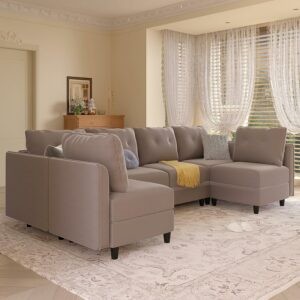Welcome to a world of elegance and functionality! Sliding doors for living rooms have become an increasingly popular choice among homeowners and interior designers. Their sleek design, space-saving features, and ability to flood rooms with natural light have made them a sought-after addition to modern living spaces. In this comprehensive guide, we’ll delve into everything you need to know about sliding doors for living room. From their benefits to the different types available, we’ll equip you with the knowledge to make an informed decision. So, let’s slide right into it!
Sliding Doors for Living Room: An Overview
Sliding doors have a long history of being used in various architectural styles, but they have undergone a modern makeover in recent years. Here’s everything you need to know about these stylish room dividers.
1. Understanding Sliding Doors
Sliding doors are a type of door that opens horizontally by sliding along a track instead of swinging open like traditional doors. They are commonly used to connect indoor and outdoor spaces, like patios and gardens. With their smooth gliding motion, they provide seamless access and an unobstructed view of the outside.
2. Benefits of Sliding Doors in Living Rooms
Sliding doors offer numerous advantages that make them an excellent choice for living rooms.
- Enhanced Natural Light: Sliding doors feature large glass panels, allowing ample sunlight to flood your living room and creating a bright, airy atmosphere.
- Space-Saving: Unlike swinging doors, sliding doors don’t require extra clearance for opening, making them ideal for compact living rooms.
- Improved Aesthetics: The sleek design of sliding doors adds a touch of modern elegance to any living room decor, making it appear more spacious and sophisticated.
- Seamless Indoor-Outdoor Connection: Sliding doors seamlessly blend your indoor and outdoor spaces, making it easier to host gatherings and enjoy the outdoors from the comfort of your living room.
3. Types of Sliding Doors
When choosing sliding doors for your living room, it’s essential to consider the various types available. Here are the most common ones:
a. Glass Sliding Doors
Glass sliding doors are the epitome of elegance and style. They are the most popular choice for living rooms due to their ability to brighten up the space and offer unobstructed views of the surroundings.
b. Wooden Sliding Doors
For those seeking a touch of warmth and natural beauty, wooden sliding doors are an excellent option. They add a rustic charm to your living room and can be customized to match your interior theme.
c. French Sliding Doors
French sliding doors combine the best of both worlds – the classic charm of French doors and the space-saving benefits of sliding doors. They are often designed with multiple glass panels, enhancing the aesthetic appeal of your living room.
Choosing the Perfect Sliding Doors
Selecting the right sliding doors for your living room involves considering various factors. Here’s a guide to help you make an informed decision:
4. Size Matters
Before purchasing sliding doors, measure the available space in your living room. The size of the doors should fit the opening precisely to avoid any installation issues.
5. Material Selection
Decide on the material you want for your sliding doors based on your preferences and interior design. Each material comes with its unique advantages.
6. Energy Efficiency
Ensure that the sliding doors you choose are energy-efficient to keep your living room well-insulated and reduce energy bills.
7. Security Features
Security is paramount for any home. Look for sliding doors with reliable locking systems and durable materials for enhanced safety.
8. Ease of Maintenance
Opt for sliding doors that are easy to clean and maintain, saving you time and effort in the long run.
Installation and Maintenance
Once you’ve chosen the perfect sliding doors for your living room, it’s crucial to follow the proper installation and maintenance procedures.
1. Professional Installation
To ensure a flawless installation, hire professional contractors experienced in fitting sliding doors.
2. Regular Maintenance
Regularly clean and inspect your sliding doors to prevent dust buildup and identify any issues that may need repair.
3. Lubrication and Track Cleaning
Keep the tracks of your sliding doors clean and lubricated to ensure smooth and noiseless operation.
Common FAQs about Sliding Doors for Living Room
Let’s address some frequently asked questions about sliding doors for living rooms:
Q: Are sliding doors suitable for small living rooms?
A: Yes, sliding doors are an excellent choice for small living rooms due to their space-saving design and ability to make the room appear larger.
Q: Can I install sliding doors myself?
A: While it’s possible for DIY enthusiasts, professional installation ensures proper fitting and avoids potential issues.
Q: Are sliding doors energy-efficient?
A: Yes, modern doors often come with energy-efficient features like insulated glass to keep your living room comfortable.
Q: Can I add curtains or blinds to sliding doors?
A: Yes, you can enhance privacy and control sunlight by adding curtains or blinds to your sliding doors.
Q: How long do sliding doors typically last?
A: With proper maintenance, sliding doors can last for decades, making them a long-term investment for your living room.
Q: Are sliding doors secure?
A: Yes, sliding doors with robust locking mechanisms offer excellent security for your space.
Conclusion
Sliding doors for living rooms are more than just entryways; they are a statement piece that elevates your home’s aesthetics. From providing an influx of natural light to seamlessly connecting indoor and outdoor spaces, sliding doors offer a myriad of benefits. By understanding the various types, factors to consider, and maintenance requirements, you can confidently choose the perfect sliding doors to suit your living room’s style and needs.
So, why wait? Embrace the elegance and functionality of sliding doors, and transform your living room into a space you’ll love to showcase to guests and enjoy every day!








